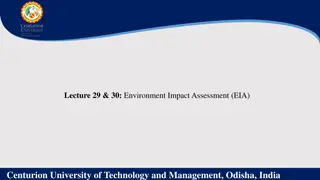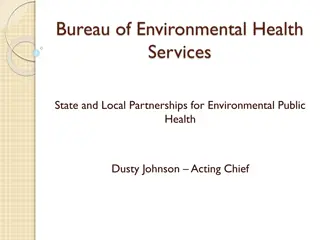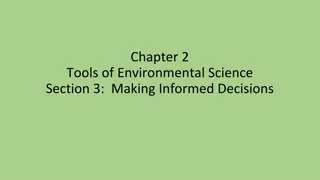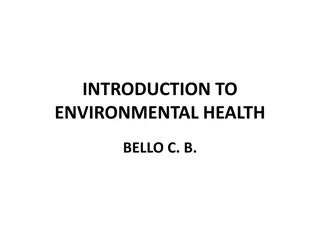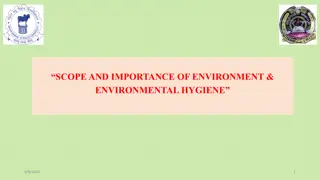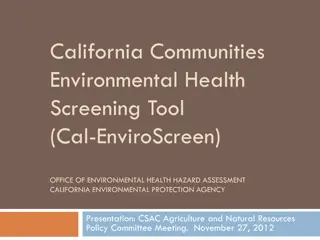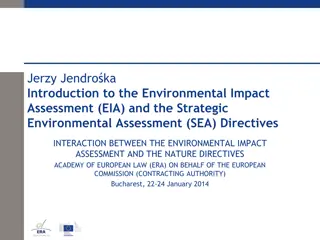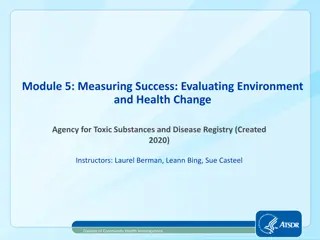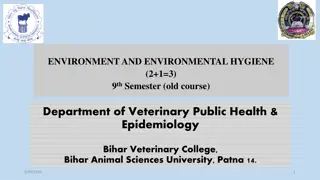The Environmental Context of Health
Explore the evolution of environmental influences on health from ancient civilizations to the modern era. From the recognition of the environment's role in disease in ancient times to the focus on sanitation in the 19th century and the current exploration of various contributors to health and disease in the 21st century, the interplay between environmental, social, and biological factors is crucial for understanding public health.
Download Presentation

Please find below an Image/Link to download the presentation.
The content on the website is provided AS IS for your information and personal use only. It may not be sold, licensed, or shared on other websites without obtaining consent from the author.If you encounter any issues during the download, it is possible that the publisher has removed the file from their server.
You are allowed to download the files provided on this website for personal or commercial use, subject to the condition that they are used lawfully. All files are the property of their respective owners.
The content on the website is provided AS IS for your information and personal use only. It may not be sold, licensed, or shared on other websites without obtaining consent from the author.
E N D
Presentation Transcript
The Environmental Context of Health Chapter 8
8.1 Environmental Health Ancient world: recognized the environment s role in disease etiology 19thcentury: public health efforts focused on environmental sanitation (miasma theory of disease) 20thcentury: shift toward focus on infectious agents and genes 21stcentury: exploration of many social / behavioral, environmental, and biological contributors to health and disease
8.2 The Home Environment To be safe, households must have adequate access to: Shelter, Water, Sanitation (toilet facilities), Fuel for heat and cooking Ideally, households also take steps to address concerns such as indoor air pollution and chemical hazards
8.3 Drinking Water Water is used for drinking, cooking, hygiene, and cleaning Access to water requires: Quality, Quantity, Proximity, Reliability, and Cost Many populations still lack water access Some face concerns about freshwater scarcity
8.4 Sanitation Sanitation: disposal of human excreta About half of the people in low-income countries practice open defecation 6 Fs: feces, fields, fluid, fingers, food, flies
8.5 Fuel & Indoor Air Quality Energy is required for: Cooking food, Boiling water, Heating when outdoor temperatures are low, Lighting at night More than 20% of the world s population does not have electricity in their homes Burning solid fuels can contribute to lung disease (and injuries)
8.6 The Work Environment Each year nearly 300 million workers miss at least 4 days of work due to an on-the-job injury Each year nearly 2 million people die as a result of job-related diseases and injuries Occupational exposures are responsible for a considerable rate of disease and disability, such as back pain and hearing loss
8.7 Toxicology Toxicology: the study of the harmful effects that chemicals and other environmental hazards have on living things Carcinogens: cause cancer Teratogens: cause birth defects When industrial accidents occur, they often affect people far from the site of the incident
8.8 The Community Environment It is advantageous to all members of a community to work together to protect the health of their air, water, environments, and populations Examples Bangladesh and arsenic poisoning DDT for malaria prevention






